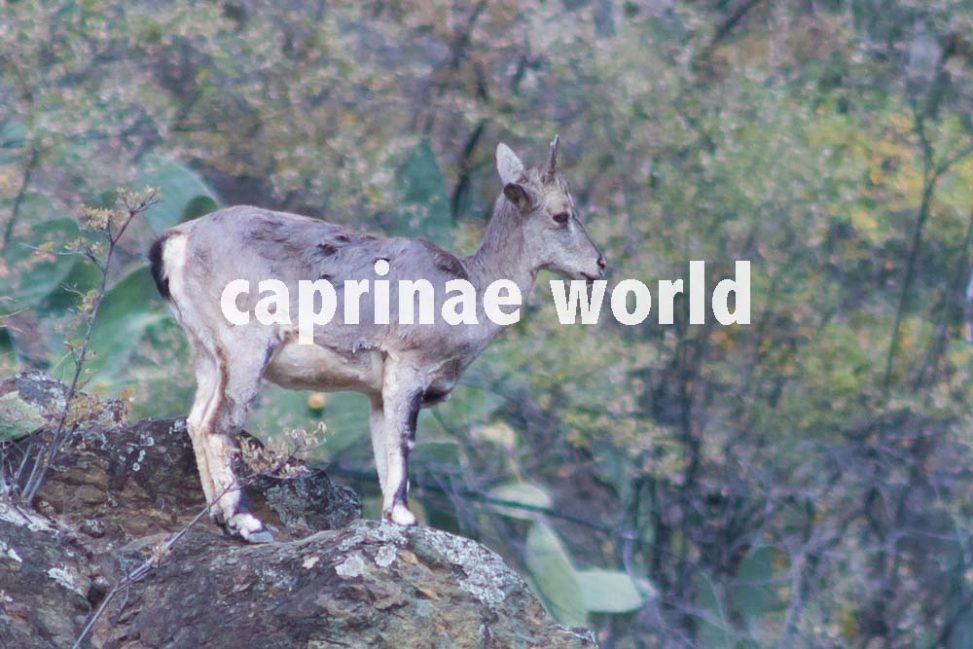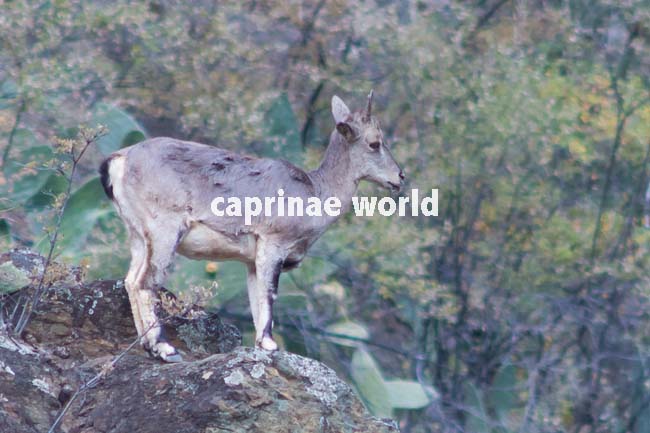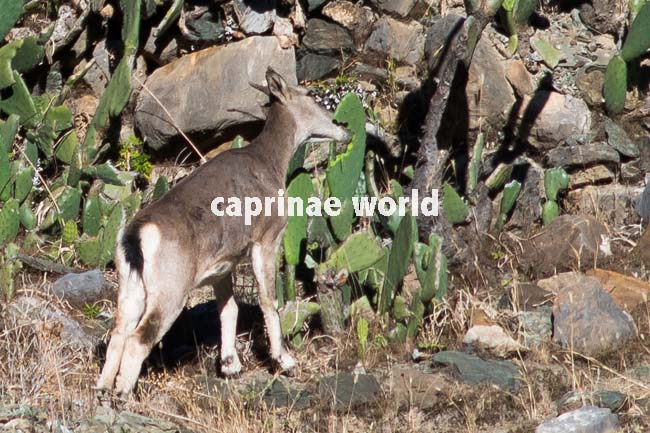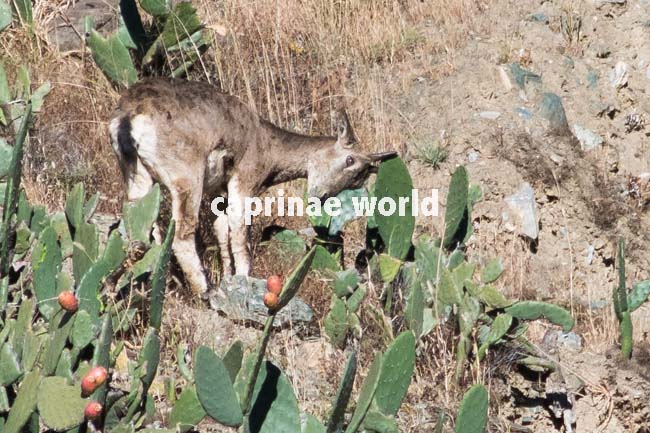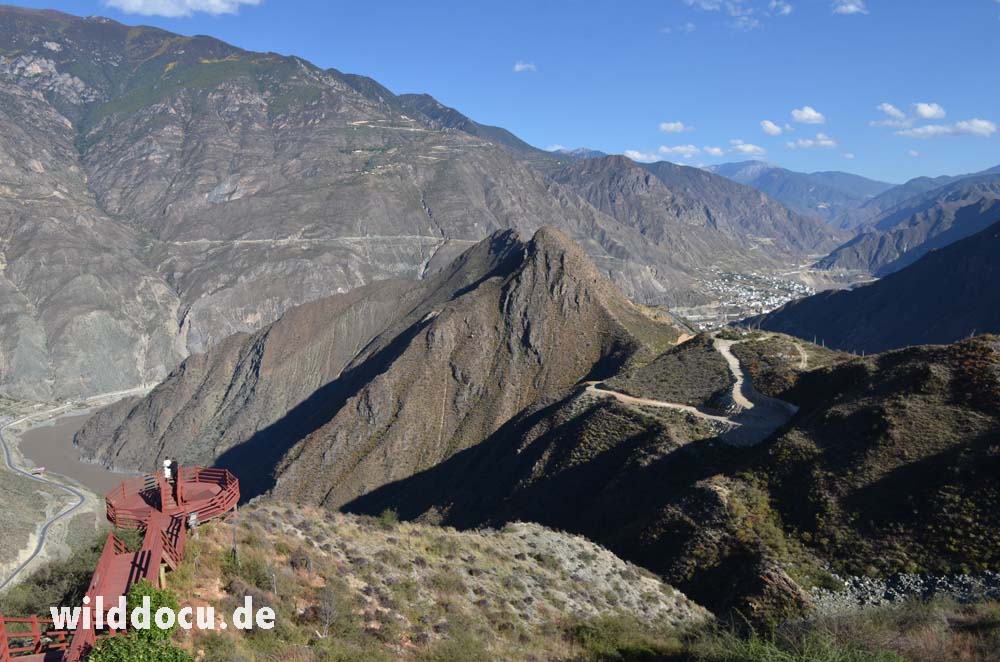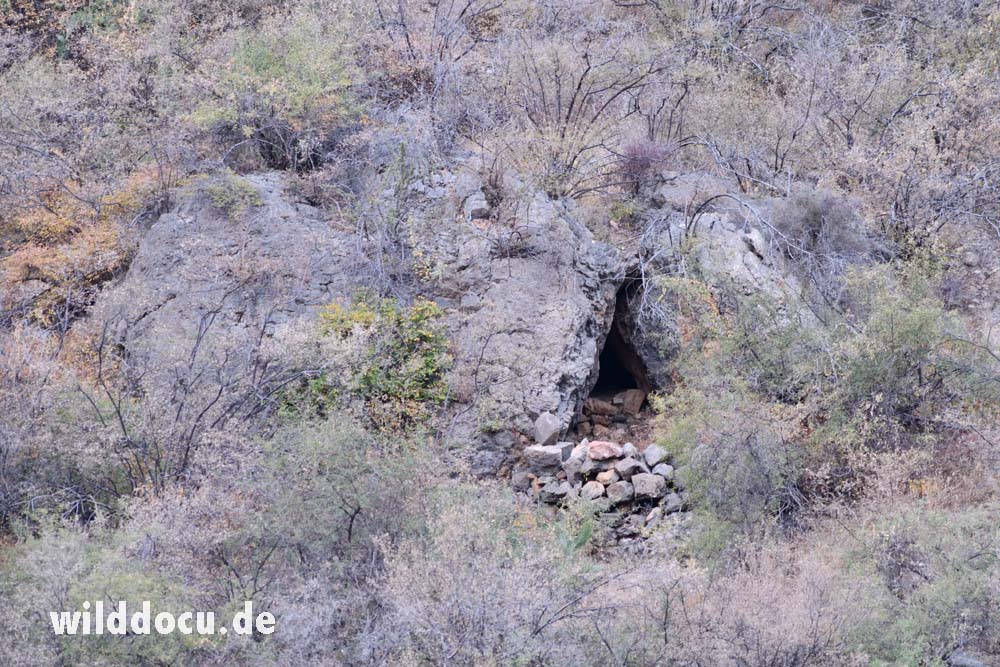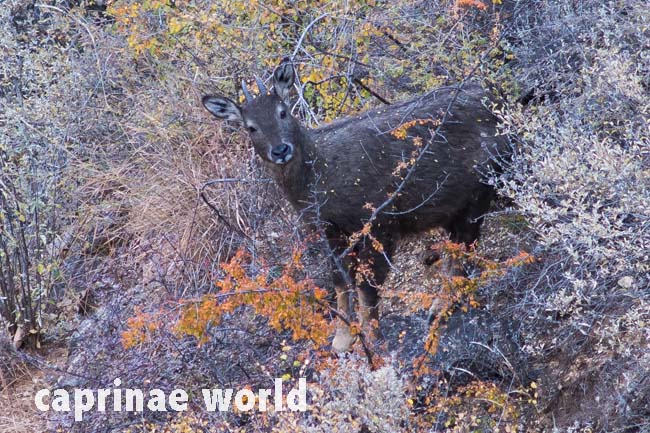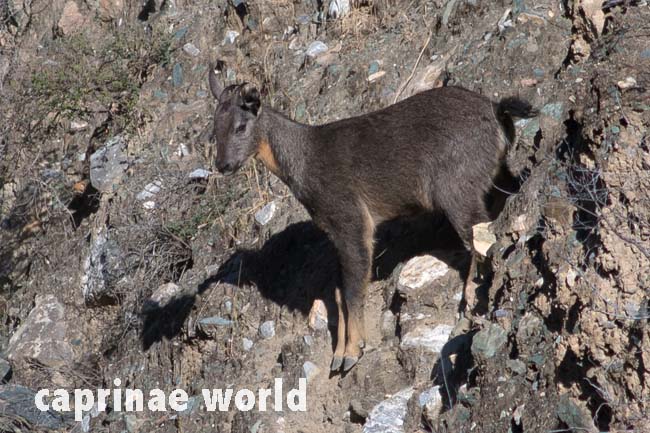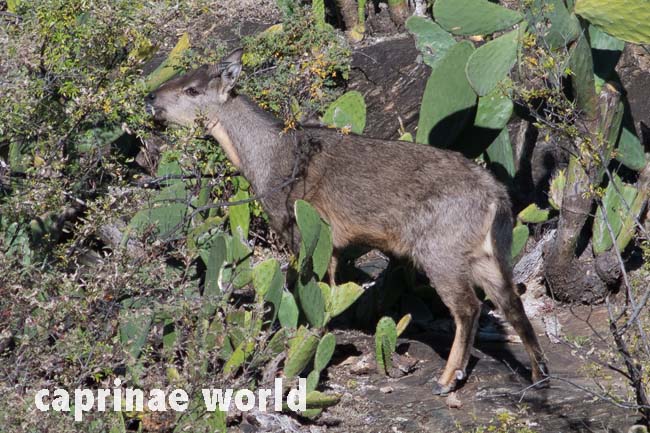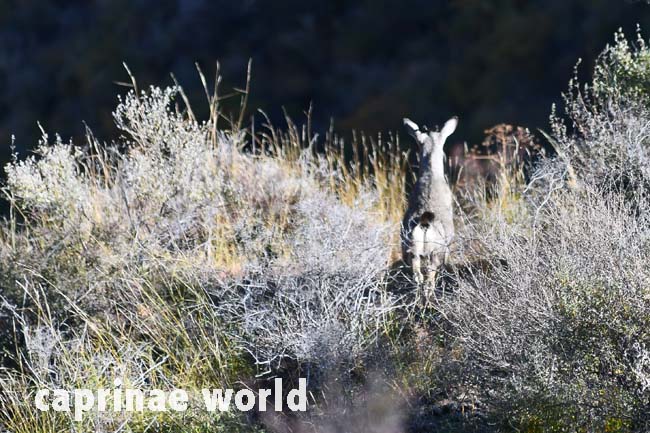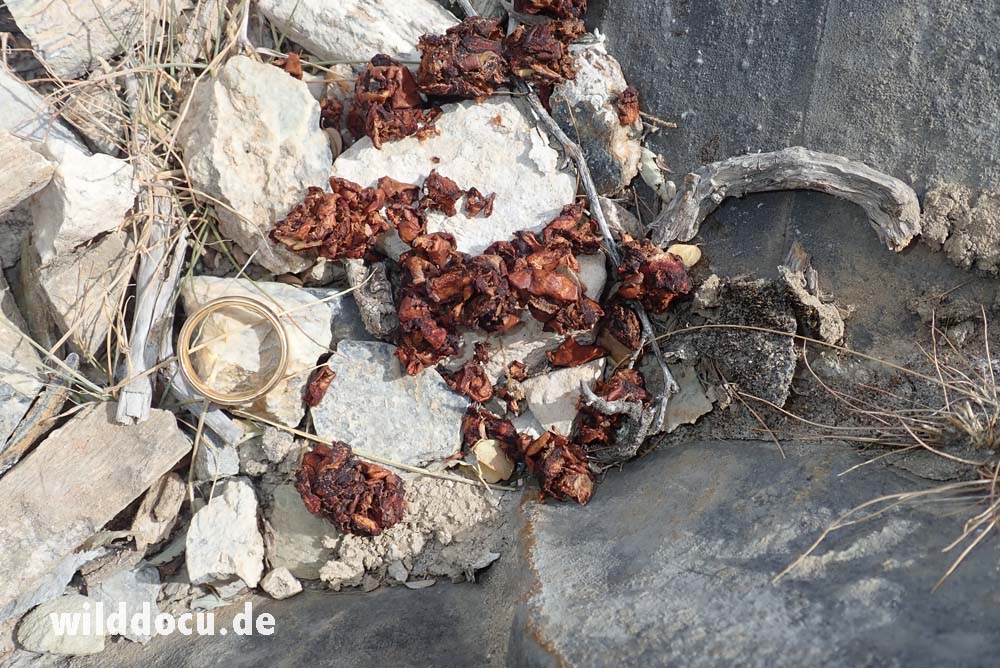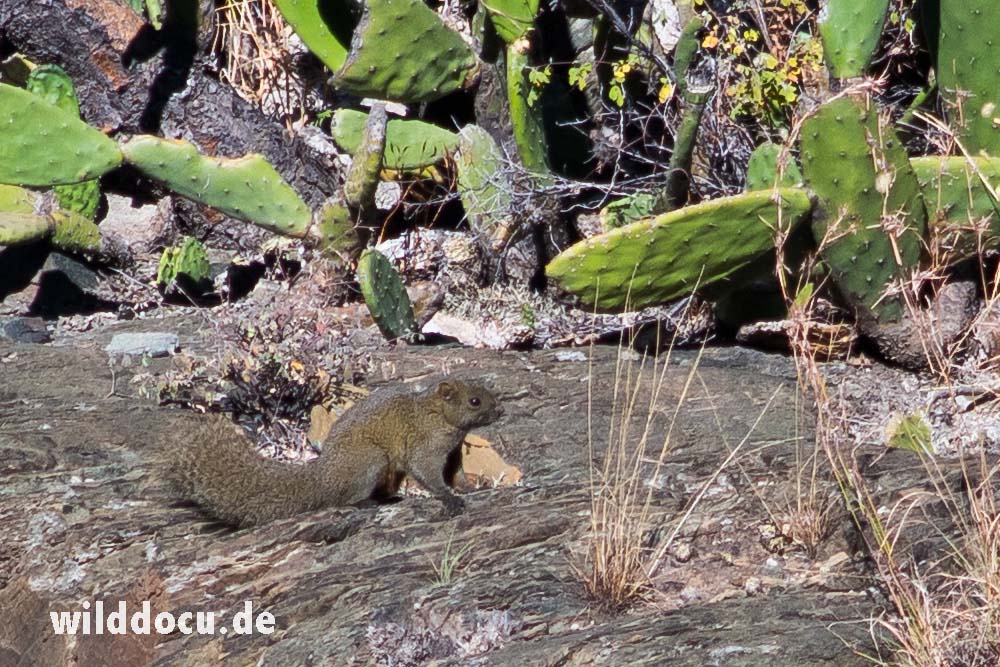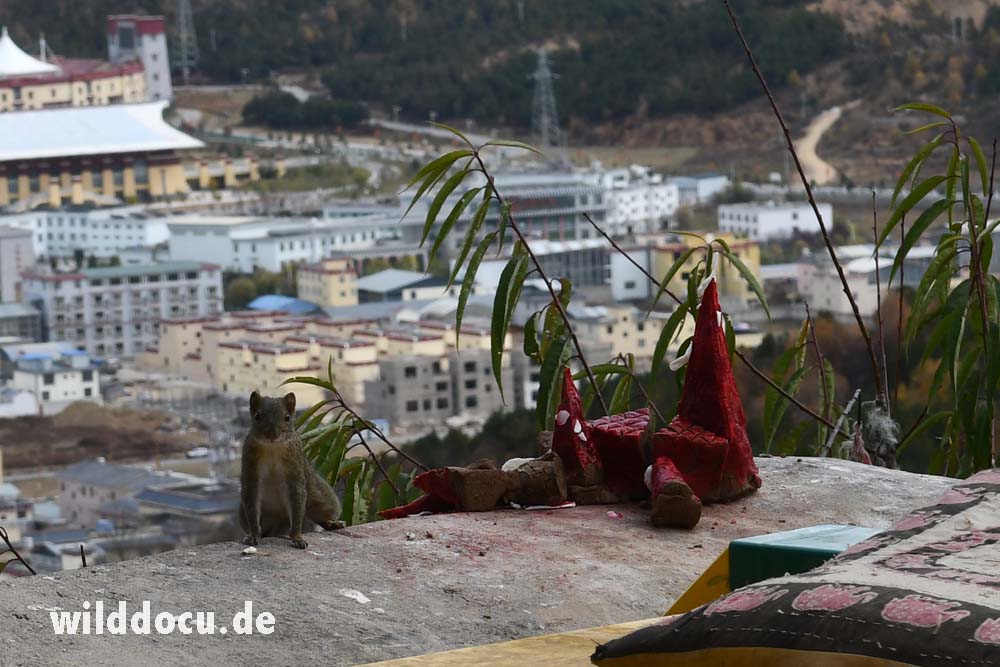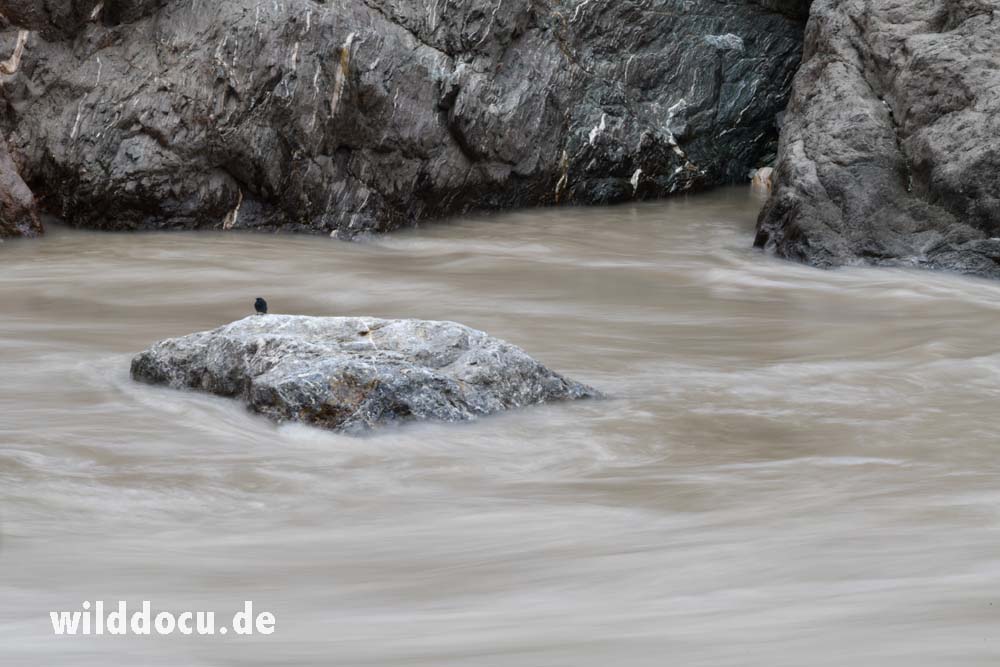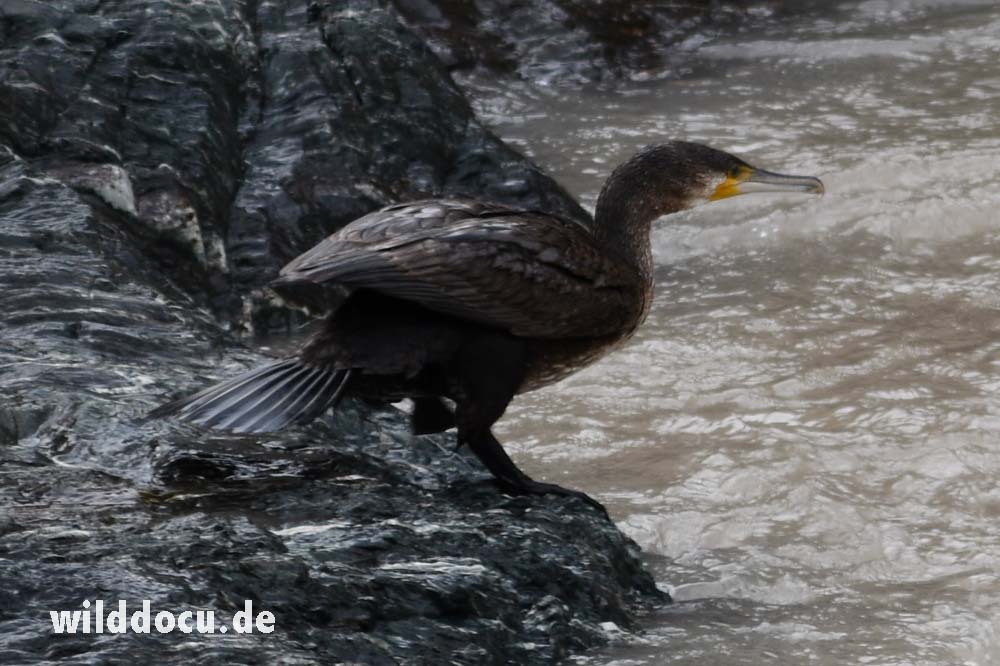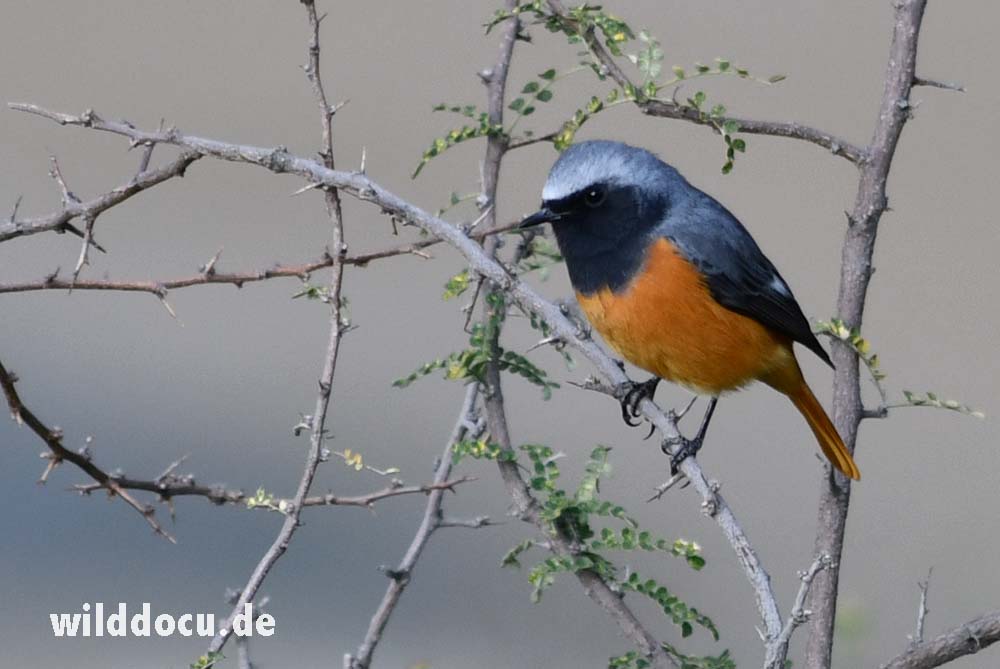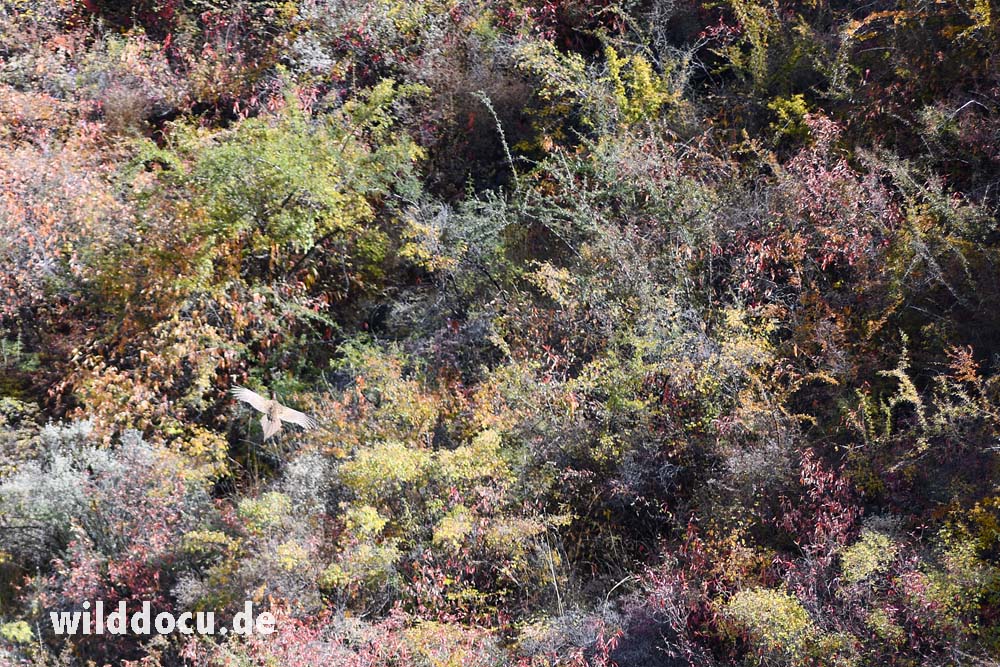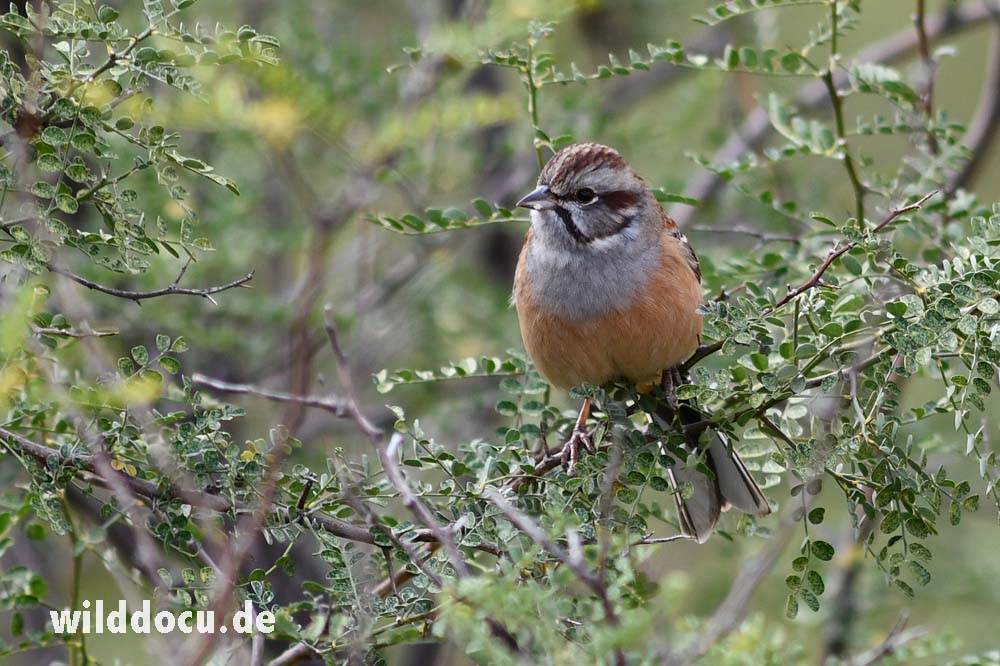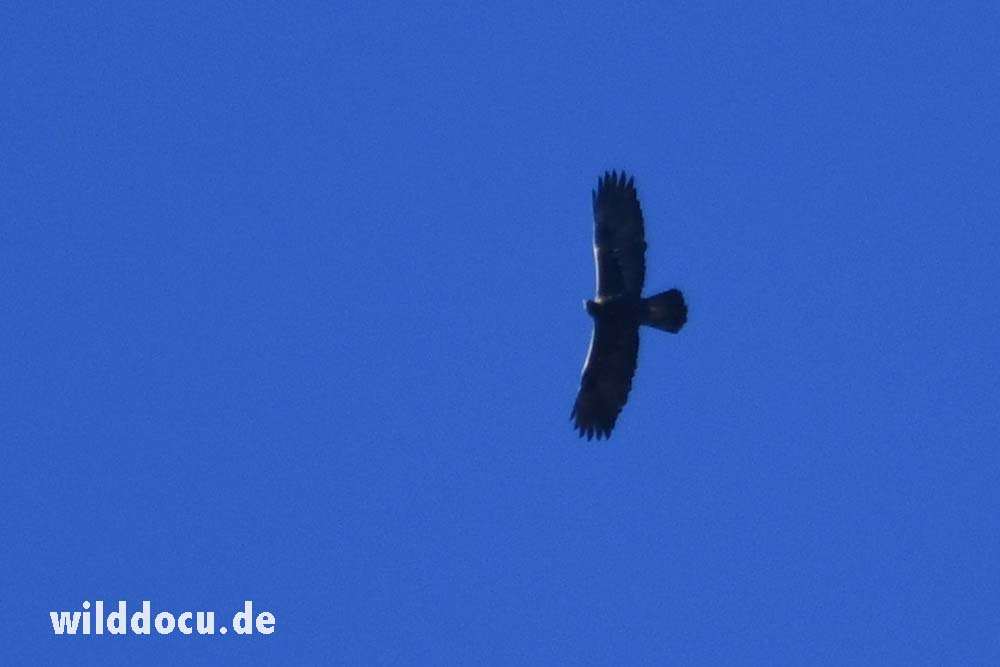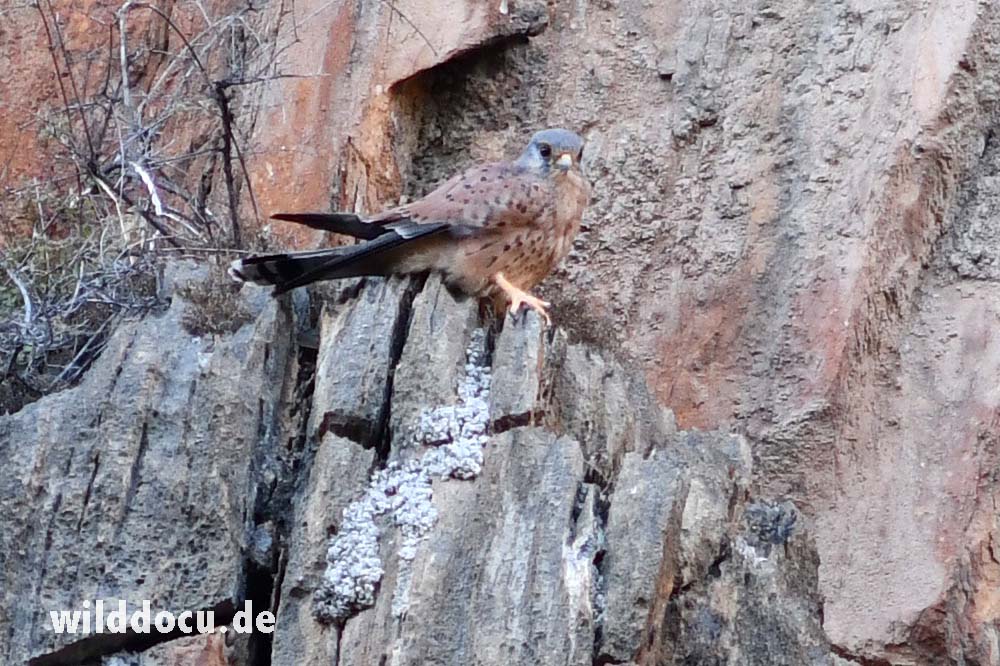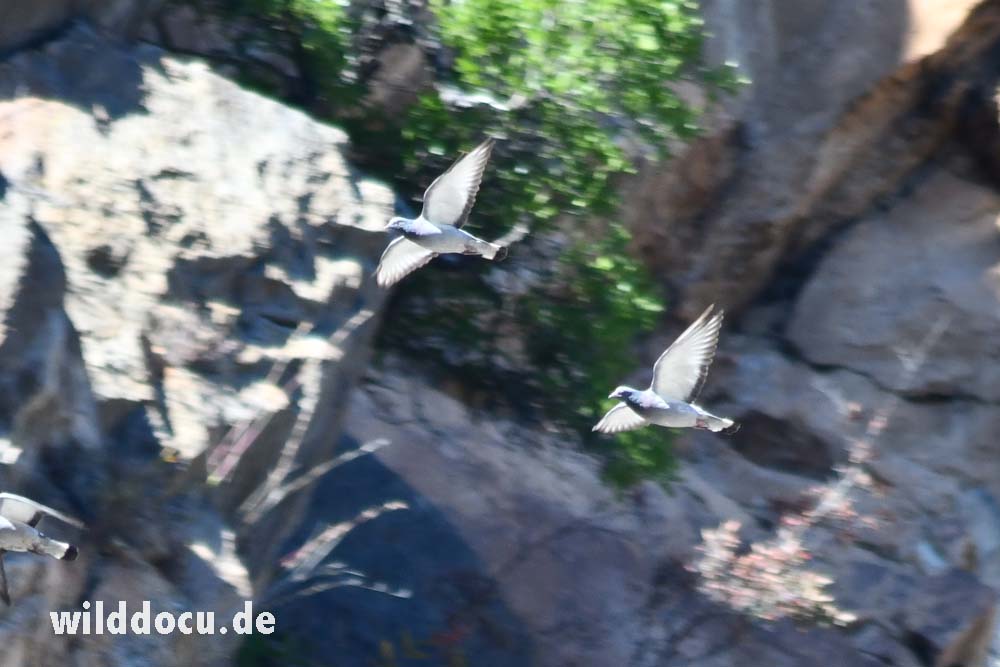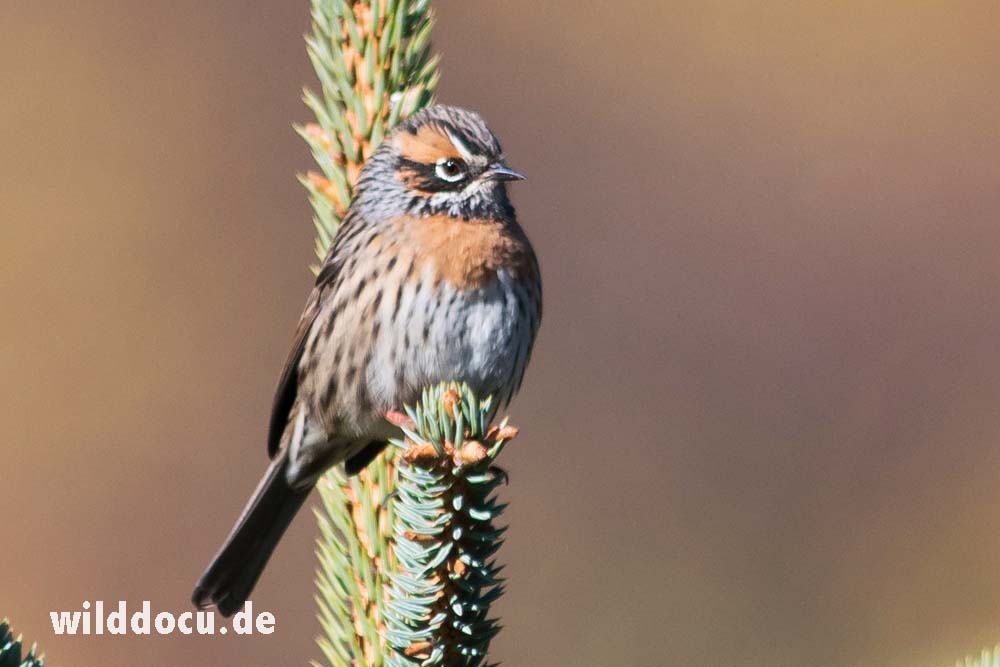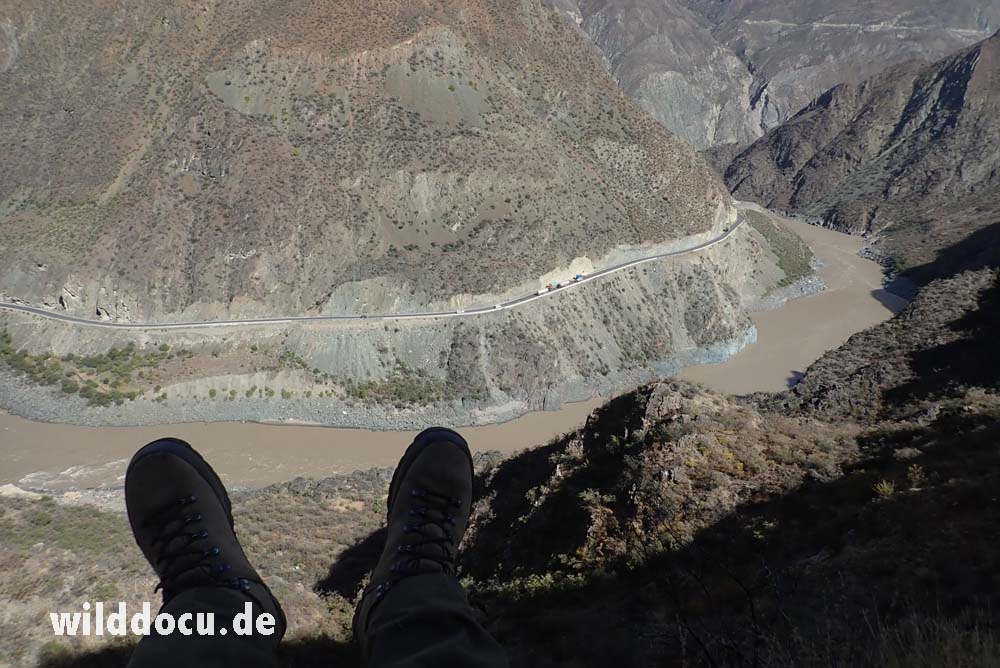You won’t find a picture of a real one on Wikipedia! There is no photo of a life animal in the internet at all – except here. It is one of the least documented ungulates in the world, the Dwarf Bharal. At Rini Mountain I found it after a long search.
There is no other trip I was planning on so long. Whomever I contacted over the years was not able to reliably guide me to the place where this rare animal occurs. So eventually I decided to try it on my own – accepting to spend more time on organizing things on site. Until this day the species is not on the list of any tour operator. I hope this report will change the situation soon.
The animal
The Dwarf Bharal or Dwarf Blue Sheep is a goat-like caprid (hence it doesn’t really make sense to call it a „sheep“). It is either seen as a subspecies of the very common Greater Bharal or as its own species. Males of the Dwarf Bharal are only half the size of their greater cousins. They also have smaller horns and a different pelage pattern.
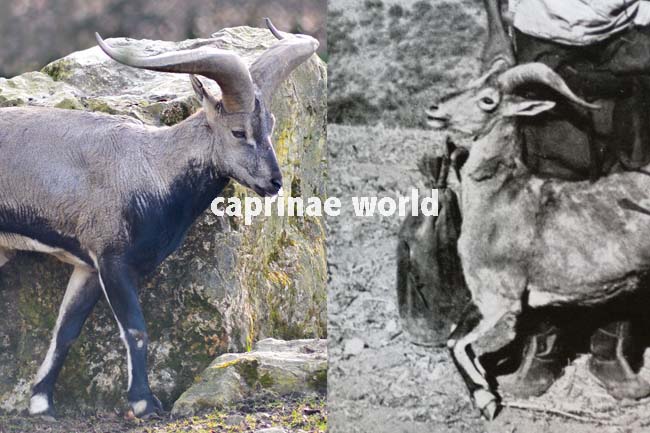
Comparison of Greater Bharal (left) and Dwarf Bharal – both animals are mature males: The difference in shoulder hight is about 10 centimetres (note the person who holds the dead Dwarf Bharal for scale), but male Dwarf Bharal weigh only half as much as their bigger cousins. It has moreover much smaller horns. Black markings are reduced and appear in this specimen only on the front of the limbs. Photos: Bürglin / Schäfer
The distribution area is still not quite clear, but the two places that are confirmed are near Batang in Sichuan and near Benzilan in Yunnan. Both sites are situated in the upper reaches of the Yangtse River (also called Jinsha River). Instead of living at very high altitudes like the Greater Bharal, the Dwarf Bharal occurs closer to the river.
Moreover animals from the subpopulation at Rini Mountain have developed a pretty unique feeding behaviour: Not only have they specialised on cactus, they also learned to use their horns to remove the spines. If you wanted to know more about the species, check the Dwarf Bharal chapter on my caprinae world pages.
Some general notes regarding the trip
I flew Zürich-Chengdu and then to Shangri-La. Shangri-La is located at 3160 metres. Upon arrival you feel the altitude! At the end of October the nights are already frosty, while the days are warm. In Shangri-La I stayed at Lao Shay Youth Hostel, which is outside the city. Adjacent is Napa Hai Lake, which is famous for its wintering birds. I spent two days there, saw great birds, but no mammals.
From Shangri-La it is only about two hours to reach Benzilan, the closest town in the vicinity of Rini Mountain. Situated at around 2000 metres, this place is much warmer than Shangri-La. Even the nights felt summerly mild. The bus to Benzilan is very cheap (35 Yuan = 4 Euros).
To reach the Dwarf Bharal habitat from my hotel (10 km) I either hitchhiked or took one of the long-distance buses and asked the driver to let me off. In the second week I had a local driver. I always felt safe. The locals – mostly Tibetans – are very helpful. Communication was feasible with an open-hearted basic attitude and i-translate on my smartphone (translater apps seem to be very common in China).

I expected very shy animals, so I brought my biggest lens with me: 800 mm, manual focussing. It was the right decision.
At Rini Mountain (I stayed from 22.10-30.10.) there are two options to experience Dwarf Bharal. Either you come from above and enter the area via the Jinsha River bend lookout or you go along the river.
1 Jinsha River bend lookout: Ironically there are thousands of tourists coming to this place staring at the river, but not knowing that they are, at the same time, overlooking the habitat of a rare mammal, which has one of the most restricted habitats. Usually only herders, poachers and scientists enter the area. It is not meant for tourists.
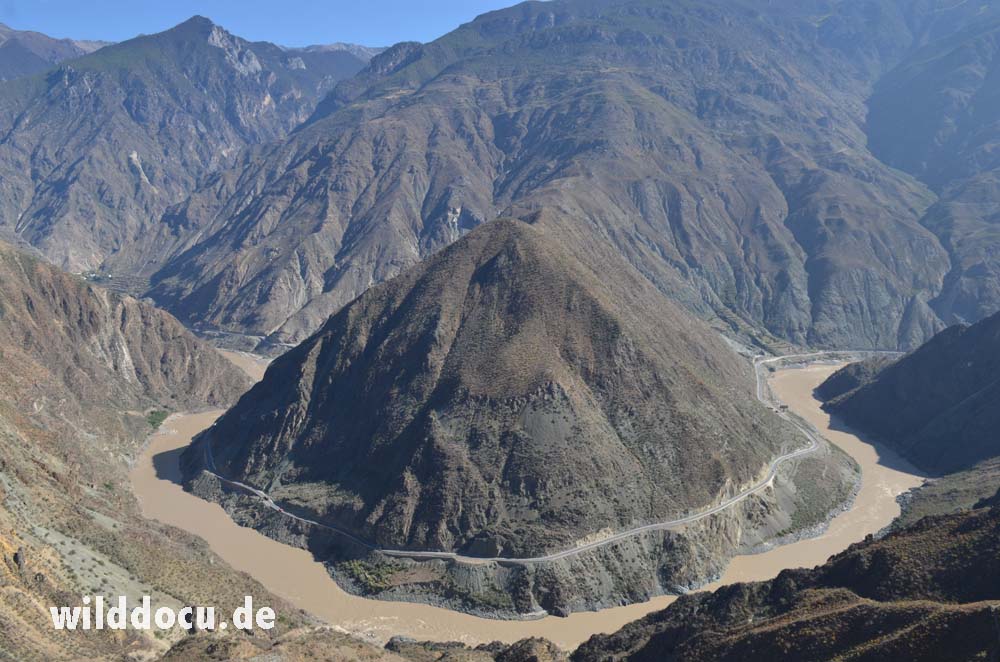
This is the view from the platform. Below: Jinsha River and the valley road. Nobody I asked was aware of the fact that the slope that leads down to the river is Dwarf Bharal habitat.
I made friends with the people from the ticket office and they told me that usually nobody enters the area. They also said it is dangerous to do so, but could not explain why. I asked for leopards. They had never heard of that species in the area. There are trails, which are not always clear, peter out, are overgrown or pass vertical cliffs. I just took it slow and made sure I had some local phone numbers to call.
On nine consecutive days I saw only once Dwarf Bharal below the lookout. But for me it was still important to enter the area to get a more detailed impression of it:
Only through entering the area I learned the following: The one Dwarf Bharal encounter showed that the animals (females with twins) are extremely shy. I must have been still 500 metres away and the animals took off already, which can only mean: The animals are poached.
I also found out that Dwarf Bharal seem to prefer the steeper sections that slope towards the river, while Chinese Goral, which are also present in the area, inhabit both, the more gentle slopes and the cliffs.
Furthermore I wanted to look for signs of predators, which could be wolves, leopards and dholes. But not even a fox did I verify. The only carnivore that I proved via feaces was a mustelid.
Otherwise I once observed a pair of Golden Eagle, which is thought to prey on Dwarf Bharal too. I also investigated a mineral lick (28°15’52N, 99°16’46E – coordinates estimated) and two potential poachers camps (near river: 28°15’50.96“N, 99°16’48.65“E; high up on the slope: 28°15’25.48“N, 99°16’48.93“E).
Approaching alongside the river / road (XO 41): If you just want to watch animals, this is your choice. During my stays at the river I could see them almost every time I went there. You can get as close as 200 metres – having the river between you and the animals. The animals don’t react to your presence here, which means the animals are not hunted from this side. Unfortunately during the time of my staying there were no males present.
Moving along the river road is dangerous. You have the choice of either being flattened by a truck or falling of the cliff into Jinsha River beyond the street boundary walls. But there are a few sites, where you can climb behind the road walls and set up a tripod:
- viewing point, northernmost, most promising: 28°16’21.86“N, 99°17’01.71“E
- viewing point, opposite mining caves: 28°16’13.63“N, 99°16’53.8“E
- viewing point, north of salt lick point: 28°16’05.82“N, 99°16’53.3“E
- viewing point for salt lick: 28°15’55.86“N, 99°16’52.04“E – you can sit relatively peacefully near the river here and get some space between you and the road; just watch for snakes (found one snakeskin).
All in all I rate it a successful trip that I enjoyed very much and which brings me closer to my ultimate goal to get decent photos of all caprinae phenotypes in the world. I never found access to the upper reaches of the cliffs, where I assume the males must have been.

Great cooks, great supporters: Duma and Azuma at my hotel in Benzilan (never found out its english name)
I hope I can contribute to raise awareness to another great caprinae subspecies and underline the significance of the eastern edge of the Tibetan Plateau as a prime destination for mammal watchers.
The last days I relaxed in Shangri-La, where I saw at least one more mammal, another lifer for me: Perny’s Long-nosed Squirrel.
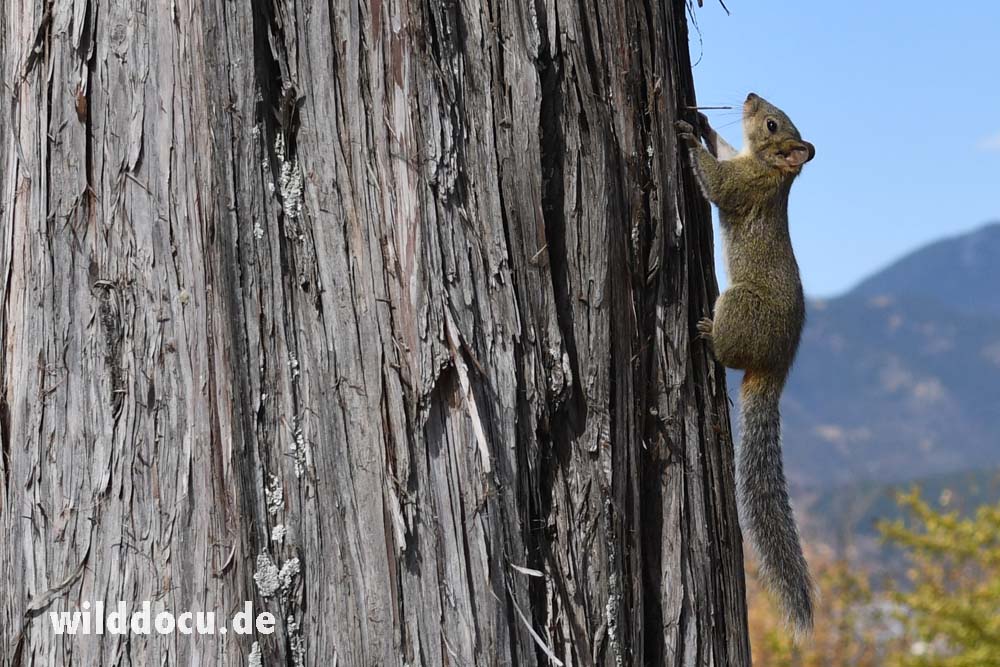
… Perny’s Long-nosed Squirrels. I follow Smith and Xie (Mammals of China, 2008): Dorsum olive-brown … ventral pelage buffy-white … anal area bright rusty brown …

… yellow(?) tufts behind ears … inner sides of hind limbs are bright rusty brown … highly vocal … diurnal … live in evergreen broadleaf trees and conifers …
Rini Mountain, Benzilan / Shangri-La mammal list 2018
| Dwarf Bharal (Pseudois nayaur schaeferi) | after the first days of searching I had sighting every day – up to 7 in one herd |
Rini Mountain. Many sightings in the lower parts of the cliffs between 28°16’24.91“N, 99°17’00.49“E and 28°15’52N, 99°16’46E
|
|
Chinese Goral (Nemorhaedus griseus)
|
4 different sightings of at least four different animals |
Rini Mountain: 2 gorals at 28°16’24.46“N, 99°17’00.9“; 2 gorals at 28°15’29.59“N, 99°16’49.37“E; 1 Goral at 28°15’20.19“N, 99°16’48.51“E; 1 Goral at 28°16’24.91“N, 99°17’00.49“E
|
|
Pallas’s Squirrel (Callosciurus erythraeus)
|
2 different sightings near the river | Rini Mountain |
|
Malayan Porcupine (Hystrix brachyura)
|
two quills found | Rini Mountain |
|
Perny’s Long-nosed Squirrel (Dremomys pernyi)
|
several animals on Chinese Junipers and on the Temple walls, looking for sacrified tsampa
|
100-Hundred-Chicken Temple, Shangri-La |

